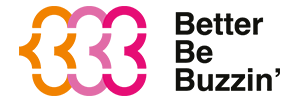
20 Tools You Should Consider For Your Marketing TechStack
The Ultimate Tool List For Your State of The Art Marketing AdStack
Designing a comprehensive advertising tech stack requires a careful selection of different platforms to seamlessly integrate media planning, media buying, reporting, conversion measurement, asset management and other marketing activities. Here are additional platforms that complete a modern and comprehensive tech stack:
1. Ad Server: The heart of the tech stack
An ad server forms the heart of the tech stack and enables the management and delivery of ads. It optimizes ad placement, ensures efficient targeting and guarantees smooth delivery of ads across different channels.
2. Demand side platform (DSP): the key to media buying
The DSP is the platform that enables media buying on the advertiser’s side. It provides access to various advertising inventories and enables the targeted placement of ads based on target group data and bidding strategies.
3. Data management platform (DMP): the treasure trove of target group data
A DMP collects, stores and organizes data about target groups. It makes it possible to create user profiles and thus enables more precise targeting. An effective DMP is crucial for personalized advertising messages and improved campaign efficiency.
4. PPC management platform: Efficient control of paid advertising
A PPC management platform is crucial for companies that rely on pay-per-click (PPC) advertising. It enables the efficient management of PPC campaigns, bidding strategies, keyword optimization and the measurement of the performance of paid ads.
5. Customer relationship management (CRM): the bridge to conversion
A CRM system is not only important for sales, but also for marketing. It enables the management of customer information, the personalization of campaigns and the analysis of conversion data.
6. Web analytics platform: eyes on the website
A good web analytics platform provides insights into user behavior on the website. It enables the measurement of traffic, the analysis of conversion paths and the optimization of the website for a better user experience.
7. Mobile analytics platform: the keys to mobile optimization
Mobile analytics platforms enable the analysis of mobile app usage data. They are crucial for companies using mobile apps to improve user experience and optimize mobile campaigns.
8. Attribution modeling tools: The path to holistic performance measurement
Attribution modeling tools help to understand the influence of each marketing touchpoint on the conversion process. They enable a more precise distribution of conversions across different channels and help to optimize campaigns.
9. Asset management platform: efficient resource management
An asset management platform enables the efficient management of advertising materials, creative content and assets. This is crucial for a consistent brand presentation and smooth collaboration between creative teams and marketing.
10. Content management system (CMS): the foundation for content management
A CMS is crucial for the easy management and updating of website content. It enables an effective content strategy and ensures that all marketing materials are current and engaging.
11. Reporting and analytics tools: The key to interpreting data
Reporting and analytics tools provide comprehensive insights into campaign performance. From real-time dashboards to detailed reports, they enable data-driven decision making and the identification of optimization opportunities.
12 A/B testing tools: The keys to continuous optimization
A/B testing tools enable the continuous optimization of ads, websites and other marketing materials. By testing different variations, companies can improve their campaign effectiveness.
13. Social media management tools: Connecting to social platforms
Social media management tools enable the efficient planning, publication and analysis of content on various social platforms. They also offer functions for community interaction and for monitoring social media campaigns.
14. Email marketing automation platform: the engine for automation
A marketing automation platform enables the automation of marketing processes, from lead generation to customer retention. It supports personalized communication and lead scoring for more effective marketing.
15. Customer feedback tools: The ear to the customer
Tools for collecting customer feedback, such as surveys and reviews, provide valuable insights into customer satisfaction and experience. This data is crucial for the continuous improvement of products and services.
16. Video marketing platform: the canvas for visual stories
Video marketing platforms offer features for creating, editing and distributing video content. They are crucial for companies that rely on visual stories to get their message across.
17. Chatbot integration: The interface for automated customer dialog
Integrated chatbots facilitate automated customer dialog. They can be used on websites, in apps or on social media platforms to answer customer queries and improve interactions.
18. Privacy management platform: focus on data protection
In view of increasing data protection requirements, a privacy management platform is essential. It helps companies to comply with data protection regulations, protect user data and maintain customer trust.
19. Marketing resource management (MRM) tool: Manage resources efficiently
An MRM tool is crucial for the efficient management of marketing resources. It enables the planning, coordination and monitoring of marketing projects, budgets and resources. This is particularly important for companies with complex marketing campaigns and numerous stakeholders.
20. Safety Tool: Ensuring a safe brand presence
A brand safety tool is an essential part of the advertising tech stack to ensure the integrity and safety of brand presence. In the face of potential risks, such as inappropriate content or fraudulent activity, this tool plays a crucial role. It continuously monitors the placement of ads and online content to ensure they are in line with brand guidelines.
A holistic approach to marketing technology
Choosing a comprehensive advertising tech stack requires a holistic approach. Each platform fulfills a specific function, but their seamless integration is what enables effective collaboration and analysis. As technology continues to evolve, the tech stack also needs to continually adapt to keep pace with changing requirements and trends. A well-designed tech stack is not only an investment in marketing effectiveness, but also a key to future-proofing in a competitive digital environment.
Our Better Be Buzzin’ consultants help you to identify the right tools and support you with inhousing consulting services like data protection and IT security assessments.
Please get in touch hello@betterbebuzzin.com
